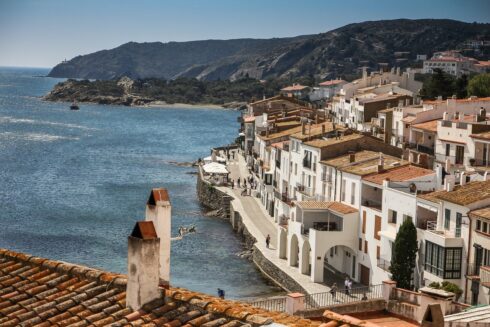AS far as protests go, those erupting across Southern Europe have been welcomingly restrained, with the biggest headlines circling around little water pistols being sprayed in Barcelona.
While enflamed by the media, it’s a harmless move that does help to bring more attention to the issue. Still, something needs to be done to readdress the balance, but delicacy is needed due to the need for tourism.
Focus Advertising Efforts on Designated Tourist Zones

Tourism makes up around 14 percent of Barcelona’s economy. In fact, in most Spanish cities – particularly coastal ones and the capital – tourism is relied upon for a big chunk of income and jobs. There are around 150,000 jobs in Barcelona that rely on tourism, according to BTC, so it still needs to be welcoming to visitors.
However, a lot of visitors are drawn in by the images of incredible historical buildings, grand beaches, warm weather, local dining, and overall notably laid-back Spanish culture. Due to the over-corporatisation that’s followed the masses of tourists, much of this has faded, making way for the likes of Zara and Taco Bell.
For these tourists, perhaps designated tourist zones would be better to set a base for tourism. Such an approach could home in on practices used in other massive tourist cities. Take London, for example. Here, specific industries are bound physically to set locations, which tend to be in close proximity.
You’ve got the West End and Shaftesbury Avenue for theatre shows, while the nearby Leicester Square has been made into a tourist hub for all things entertainment. It’s here that the prestigious The Hippodrome stands in the same area as the colossal Empire cinema, the Gardens, and other entertainment venues.
The success of this plotting has enabled the square and The Hippodrome in particular to become a global brand, with the latter expanding its operations into the online space. Thanks to advancements in live streaming technology and accompanying tech, its live casino UK players and those beyond the country can access a game played in real time from The Hippodrome itself. Their very own live blackjack and roulette games are always a hit and showcase the draw of the distinctly tourist-facing venue in the designated tourist area of London.
Back in Barcelona, there are already, some moves being made to try to segment tourists. At Sagrada Familia, for example, designated selfie spots have been established. It’s an unfortunate reality of modern tourism, but shows that adaptations can be made.
Cut Off Short-Term Rentals and Visitors

Airbnb has long been a problem for local housing markets. The platform disincentivizes people from selling properties when they’re done, creating mini-landlords who profit greatly from worsening housing shortages. Luckily, this has been identified by the crowds and councils, including in Cataluña, and now some 66,000 will be delisted.
Another somewhat overlooked factor for port cities around Spain is the cruise tourism industry. People land, pour out into the streets to see as many sights as they can in a short amount of time, and then leave. It’s rather disruptive, especially around big attractions like Barcelona FC Stadium which has a museum and offers tours, and does little to add to the local economy.
The excess of tourism to cities like Barcelona needs to be tackled carefully. Locals should be the number one priority, but many locals rely on the income of tourism. Setting more designated tourist areas would be a start, but stemming the flow goes further than that.
Click here to read more News from The Olive Press.








